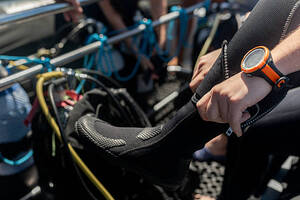-
 Find in Members
Find in Members Find in Videos
Find in Videos Find in Channels
Find in Channels
This website uses cookies to ensure you get the best experience on our website.
To learn more about our privacy policy Click herePrivacy Preference
- Tags - #diving boot
-
- Last updated Sep 23 0 comments, 8 views, 0 likes
More from QingTian Li
More in Politics
Related Blogs
A Guide to Diving Boots
Posted By QingTian Li
Sep 23
Body
Diving boots are a cross between neoprene socks and shoes, as they have soft neoprene upper halves with a zipper on their side and hard-bottomed soles. This seemingly insignificant item of scuba diving equipment should not be taken for granted, as it often can mean the difference between a comfortable dive and an unpleasant one.
Benefits of Diving Boots
The right pair of diving boots will help make your dive more comfortable, keep you warm in cold water, prevent your feet from getting chaffed while finning, and protect them from sharp coral, rocks, and other hazards.
How to Put on Diving Boots
Whether you’re using a plastic bag, diving socks or bare feet, the first thing to do is to fold the top part of the boots down. Once the cuff is folded, insert as much of your foot into the boots as possible.
Using diving socks will make this process much faster and smoother compared to going barefoot. Once your entire foot is in the boots, gently pull the cuff completely up. Adjust if needed to get a completely comfortable fit.
How to Dry Diving Boots
Once the boots are slightly damp to the touch (after using the dry towel to wring out extra water), move them to a dry and warm area. If your diving boots have a pull tab or zipper, you can hang them from a peg hook or something similar.
Stuffing the slightly damp boots with newspaper can also help speed the drying process. Positioning the boots near a fan is also recommended if that’s possible.
Conclusion
The boots may be optional, but there are several reasons to have them on hand for every dive.If you find dive boots feel too clunky and heavy for your taste, you can always opt for a pair of diving socks instead, which provide a little less protection from abrasion but virtually the same warmth, depending on your preference.









Comments